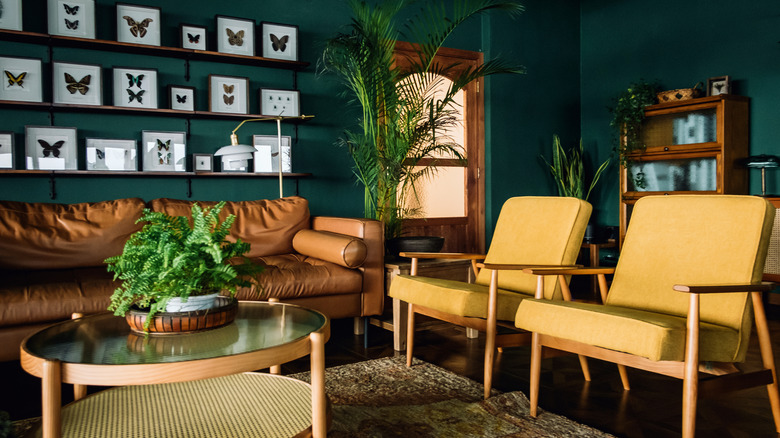Reupholster Vs Buying New: How To Save Money In The Long Run
Beautiful fabric furniture pieces can be found at any thrift store or consignment shop — often at reasonable prices. However, these pieces might come with a level of wear — or an outdated pattern — that makes reupholstering necessary. Or, you might already have a sofa or chair that you enjoy, but your tastes have changed since you purchased it, so you are debating between exchanging it for something new or reupholstering it to bring your furniture back to life. Heading down to the furniture store or Amazon might be easier, but it's not necessarily cheaper. Instead, consider reupholstery, which could save you money in the long run.
Furniture reupholstery involves more than just removing old fabric and replacing it with a newer, fresher face — the process can include repairing damage and replacing padding that may have been flattened over the years. Though reupholstering can be cost-effective, it's not necessarily cheap. Professional reupholstery for a sofa can run between $600 and $4,000, and reupholstering a chair can cost anywhere from $50 to $2,000, depending on the size of the piece and the upholstery materials you choose.
These are not insignificant amounts, but reupholstery is an investment in longevity. New, cheap furniture can show visible signs of wear or break in under a year, as modern furniture is not necessarily made to last. But reupholstering an existing piece adds many years to its life and improves durability, so you won't have to worry about buying a new sofa any time soon.
When reupholstering is worth it
Reupholstering can be an easy trick to breathe new life into old, dated furniture, but is it the most cost-effective solution for you? If you have a sentimental, heirloom, or unique vintage piece, reupholstering is a great option. Older furniture items are often made from dense, solid wood, as opposed to modern furniture, which incorporates particle board, fiberboard, and plastic to cut down on manufacturing costs. While these materials culminate in an affordable product, that piece of furniture is not as durable as its reupholstered counterpart. Reupholstering an existing quality piece of furniture gives you something high-end for prices comparable to a new piece of furniture, but with the added benefit of hand-picked materials that will last you many years.
For the eco-conscious, there is another value to reupholstering — sustainability. The furniture industry is responsible for 8 to 10% of global greenhouse gas emissions and contributes to global deforestation, sacrificing 15 billion trees annually to meet high demands. In the United States, 80% of all tossed furniture ends up in a landfill, so reupholstering an old piece saves you money and helps save the planet.
The costs and benefits of professional reupholstery vs. DIY
Since reupholstery can be expensive, DIYing a project is often considered the more affordable option for those on a budget. However, before reupholstering vintage furniture, consider consulting a professional about your options. DIYing is a great solution if you're working with a simple furniture structure. Things like dining chairs, stools, and small ottomans can be easy to tackle for someone new to reupholstery, as those projects will be more straightforward and likely won't require more than a few tools. If you're willing to invest time and money into learning a new craft, DIYing upholstery could save you a lot of money on professional labor costs.
While DIYing might save you some money, not all pieces of furniture are approachable to non-professionals. Because professionals have the right tools, high-level skills, and time to devote to the reupholstering project, they can have your piece finished better and faster than you could on your own. If you're looking for high-quality results and premium materials, investing in professional upholstery will give you the most return on your investment.


